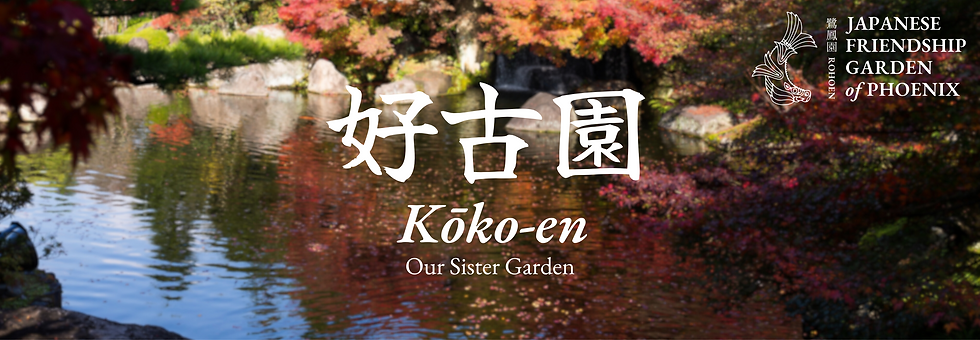Promoting Peace in Our Community: NAJGA's Gardens for Peace
- JapaneseFriendshipGarden

- Aug 27, 2023
- 2 min read
With August being international peace month, we want to highlight one of our newer editions to our annual calendar of festivities: Gardens for Peace.

Gardens for Peace (also known as G4P) is an annual project created by the North American Japanese Garden Association. This annual project, inaugurated in 2021, brings communities together within Japanese gardens to promote peace through various activities.

To understand the inspiration for Gardens for Peace, we have to understand the origin of many North American Japanese gardens. After the turmoil of World War II, Japanese gardens in North America emerged as symbols of healing and unity. They weren't just spaces with lush greenery and flowing water – they became living connections between sister cities initiatives, like the bond between Phoenix and Himeji. These gardens cultivated cultural exchange and friendship, acting as bridges to mend differences and encourage global teamwork. Over time, they transformed into places of learning, tranquility, and community bonding.
With this in mind, Gardens for Peace's project celebrates the very ideals these gardens stand for. Both public and private gardens linked with NAJGA participate annually in this project, all working towards a shared goal: spreading the message of world peace. The heart of this initiative involves creating a peace pattern in each garden's karesansui, designed by the Hiroshima based artist Mrs. Toshiko Tanaka. Tanaka is a strong advocate for peace and a survivor of the atomic bombing in Hiroshima, making her design that much more impactful.

Mrs. Toshiko Tanaka's creation, called "heiwa" meaning peace in Japanese, is an abstract look at the hiragana that make up heiwa (へいわ ). Her rendition creates a beautiful piece of art, and something that can be easily raked into dry gardens. When people come together rake the sand to form the heiwa pattern, it's not just about making something beautiful. It's about coming together, having conversations about peace, and realizing the importance of working as a team.

Every year, Gardens for Peace shines as a reminder that nature, art, and culture can heal wounds and build bridges across the globe. This project, nurtured by the North American Japanese Garden Association, is a living testament to the incredible legacy of Japanese gardens on our communities. With every rake stroke, we're not just creating a design; we're working to creating a kinder world. The heiwa pattern becomes a ripple of hope, reminding us that peace is within reach when we all come together to nurture it.
Learn more about our upcoming Gardens for Peace event here: https://www.japanesefriendshipgarden.org/events-workshops
.png)



Comments